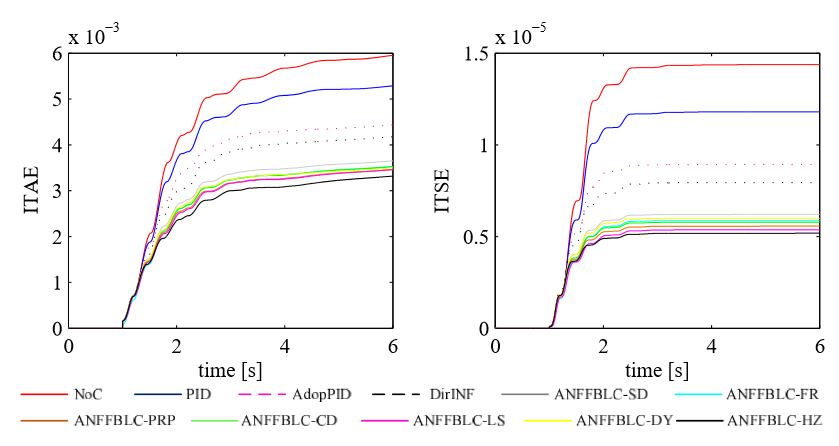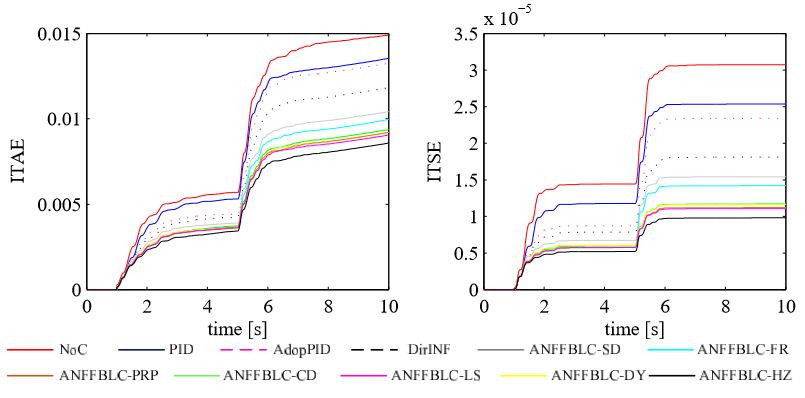ABSTRACT
The existing literature predominantly concentrates on the utilization of the gradient descent algorithm for control systems design in power systems for stability enhancement. In this paper, various flavors of the Conjugate Gradient (CG) algorithm have been employed to design the online neuro-fuzzy linearization-based adaptive control strategy for Line Commutated Converters (LCC) High Voltage Direct Current (HVDC) links embedded in a multi-machine test power system. The conjugate gradient algorithms are evaluated based on the damping of electro-mechanical oscillatory modes using MATLAB/Simulink. The results validate that all of the conjugate gradient algorithms have out performed the gradient descent optimization scheme and other conventional and non-conventional control schemes.
AC/DC POWER SYSTEM MODEL DESCRIPTION
The major components of test AC/DC power system comprise the synchronous generators with control, LCC-HVDC links, transmission lines and transformers. Synchronous machines and control dynamics are expressed by differential equations, while algebraic equations describe the load flow and network model.
CLOSED-LOOP CONTROL SYSTEM DESIGN
The proposed ANFFBLC scheme is a model-free indirect control strategy and requires minimal knowledge of the power system. The dynamics of the AC/DC power system are identified through an Adaptive Neuro-Fuzzy Identifier (ANFI) using the Wide-Area Measurement System (WAMS)-based measured speed signals of generators. The CG algorithm on-line optimizes the ANFI parameters to minimize the identification error.
The coefficients of the FBLC are also tuned through the nLMS algorithm to maintain its performance over a wide range of operating conditions. Based on the identified power system model, the ANFFBLC generates the appropriate damping signal for each HVDClink. The following section explains the implementation and function of the ANFFBLC to improve the damping of the power system oscillations.
SIMULATION RESULTS AND DISCUSSION
Two performance indexes ITSE and ITAE are shown in Figure 5. The ITSE plot represents time-weighted speed deviation error during the transient-state. The best improvement of 55% in the minimization of the transient-state error is achieved by ANFFBLC-HZ in comparison with PID control, while the ITSE plot of ANFFBLC-FR shows 50% improvement over PID. The ITAE plot represents time-weighted errors persisting for a long time and depicts the damping efforts during the steady-state conditions. The ITAE index for ANFFBLC-HZ shows 36% improvement in damping persistent oscillations as compared to the conventional control.

Figure 5. Performance indexes with fault at bus MTL and a 1000-MW load reduction
A better picture of damping performance is described by the performance indexes shown in Figure 9. As perceived by the ITSE plots, transient-state errors are minimized with ANFFBLC and benchmark controllers for both faults. However, ITSE indexes for ANFFBLC schemes have a lesser value and rapidly maintain constant index values during the steady-state condition after the second fault. The ITSE index for ANFFBLC schemes shows overall 39–61%, 34–57% and 15–45% improvement in the minimization of the speed deviation error during transient-state conditions as compared to PID, AdapPID and DirINF controls, respectively.

Figure 9. Performance indexes with a sequence of faults at buses QUE and SAG
CONCLUSIONS
The article presented an MIMO POD controller for multiple HVDC transmission systems. The ANFFBLC schemes effectively modulate the real power flow through the HVDC system to enhance its damping assistance during perturbed conditions. Excited power oscillations under any disturbance are apprehended by the ANFFBLC on the basis of the measured speed signal of generators. SD and six CG algorithms are employed to optimize the parameters of ANFIS that minimize the identification error and captured the updated plant dynamics without a priori knowledge of the system model.
The damping performance is investigated through the multi-machine AC/DC power system exposed to the disturbances of different severity. Results obtained for a wide range of operating conditions indicate the improved damping performance of different proposed CG-based ANFFBLC schemes as compared to ANFFBLC-SD, conventional PID control, AdapPID and DirINF. Among CG algorithms, the HZ method shows the best optimization capabilities with strong convergence to optimal minima of the optimization function.
Rapid identification of the plant model with the HZ method enables ANFFBLC-HZ to derive the desired control output that effectively damped LFO in the power system. The future work includes the implementation of MIMO nonlinear POD control for multiple HVDC links and FACTS controllers, as well as the investigation of the effect on damping the low-frequency oscillations.
Source: Carnegie Mellon University
Authors: Saghir Ahmad | Laiq Khan
>> More Matlab Projects on Signals and Systems for Students
>> 200+ Matlab Projects based on Control System for Final Year Students